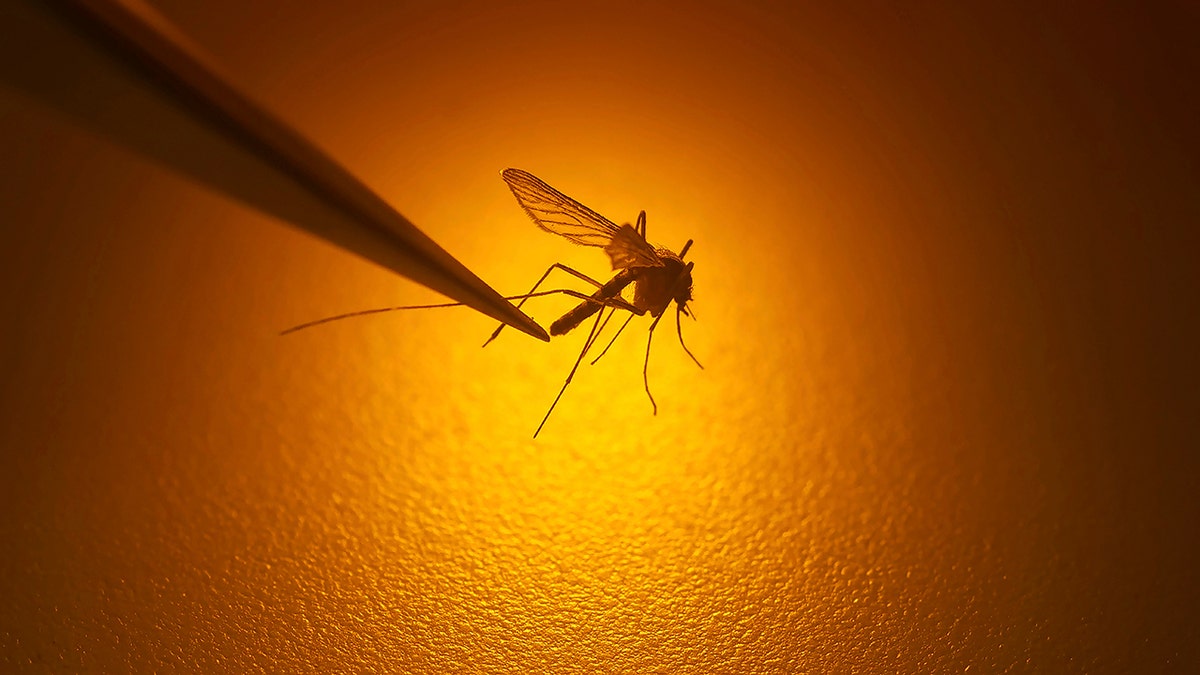Fox News Flash top headlines for July 24
Fox News Flash top headlines are here. Check out what's clicking on Foxnews.com.
The World Health Organization warned on Friday that cases of dengue fever could reach close to record highs this year, partly due to global warming and the way that climate has helped the mosquitoes that spread it, Reuters reported.
Rates of the disease are climbing worldwide, "with reported cases since 2000 up eight-fold to 4.2 million in 2022," according to the same source.
"Europe has reported a surge in cases and Peru declared a state of emergency in most regions."
LISTERIA OUTBREAK KILLS THREE ADULTS IN WASHINGTON STATE, HEALTH DEPARTMENT CONFIRMS
However, international travelers in the U.S. who are looking for protection against this tropical infectious disease spread by mosquitoes will have to wait a little longer.
On July 11, the Japanese drug-maker Takeda voluntarily withdrew its application to the Food and Drug Administration (FDA) for its dengue vaccine candidate in the U.S. after the agency requested more data that the current trial could not capture, according to a press release.

European Union officials warned on Thursday June 22, 2023, that there is a growing risk of mosquito-borne viral diseases such as dengue and chikungunya in Europe due to climate change. (AP Photo/Rick Bowmer)
A dengue vaccine from the company is already approved in multiple endemic and non-endemic areas, such as the European Union, United Kingdom, Brazil, Argentina, Indonesia and Thailand.
There is only one dengue vaccine approved by the FDA in the U.S., but it is indicated only for children and teenagers ages six to 16 living in endemic areas — mainly Puerto Rico — who have previously had the infection.
‘Occurring in urban areas where it did not exist before’
The World Health Organization listed dengue fever as one of the top 10 threats to global health in 2019.
Roughly half the world’s population, or about 4 billion people, live in places that are at risk for dengue fever, with some 400 million people infected every year.
Dengue is flourishing because "it’s so crowded that anything can happen," said one medical expert.
One country, Peru, is currently battling its worst outbreak in history.
"Dengue is occurring in urban areas where it did not exist before," Dr. Coralith García, associate professor at the school of medicine at Cayetano Heredia University in Lima, Peru, told Fox News Digital.
Experts blame warmer temperatures and increased rainfall, but even in Lima, the second largest desert city in the world, dengue is flourishing because "it’s so crowded that anything can happen," she added.

About one in four people with dengue fever become sick, which can be either a mild or severe illness — but some 40,000 die from severe disease every year, according to the CDC. (iStock)
"But Peru had the highest COVID mortality rate [in] the world and now we have several patients dying of dengue, confirming that the Peruvian health system is very weak."
Most Americans get infected with dengue fever while traveling internationally.
Yet it can spread locally in several states with hot, humid climates, such as Florida, Hawaii, Texas, and Arizona — although this is not common, according to the Centers for Disease Control and Prevention (CDC).
From January to June 1 of this year, there were 129 reported cases in the U.S. and 256 reported cases in Puerto Rico, according to the CDC.
What is dengue fever?
Dengue fever is caused by four viruses: dengue virus 1, 2, 3, and 4.
It is spread primarily by the bite of the Aedes aegypti mosquito, which bites generally during the day, per the CDC.
International travelers often complain of a fever with dengue within two weeks after returning home, but symptoms generally resolve within one week.
A person can get infected as many as four times because one virus strain only confers immunity against that specific serotype; people are at higher risk for a life-threatening condition called dengue hemorrhagic fever when they are infected twice, per the CDC.
About one in four people with dengue fever become sick, which can be either a mild or severe illness; but some 40,000 die from severe disease every year, according to the CDC.
Dengue fever is the leading cause of fever among returning travelers to Europe from all continents except Africa, according to a recent study on the tropical disease.

Among returning travelers to Europe from all continents except Africa, dengue fever is the leading cause of fever, according to a recent study on the tropical disease. (Paul Hennessy/SOPA Images/LightRocket via Getty Images)
International travelers often complain of a fever with dengue within two weeks after returning home, but symptoms generally resolve within one week.
Know the critical phase
Dengue has 3 phases of disease: 1) fever phase; 2) critical phase; and 3) recovery phase.
The fever phase, named after its most common symptom, is characterized by severe joint pain and headaches, but most patients recover without complications, Dr. David O. Freedman, professor emeritus of infectious diseases at the University of Alabama at Birmingham, told Fox News Digital.
The disease’s hallmark bone and joint pains have earned it the nickname "breakbone fever."
The disease’s hallmark bone and joint pains have earned it the nickname "breakbone fever."
ARE YOU A MOSQUITO MAGNET? IT MIGHT BE FOR ONE UNPLEASANT REASON
"In a small proportion of patients, just as the fever is resolving, a second critical phase develops where fluid leaks out of the circulation and gets into body spaces, such as the chest and abdominal cavities," he added.
During this phase, the blood pressure drops; severe bleeding may also occur.
Warning signs and symptoms
Freedman recommends watching for abdominal pain or tenderness; 2) persistent vomiting; 3) fluid in body spaces; 4) bleeding from the mouth or rectum; and 5) lethargy and restlessness.
Any of these combined with a fever increase the likelihood of patients becoming very sick and needing to be hospitalized.

"If the patient survives the critical phase usually with medical intervention, the third phase, recovery, occurs about 3-4 days after that." (iStock)
He also reminds people that "a total body rash often develops during the critical or early recovery phase."
Freedman noted, "If the patient survives the critical phase usually with medical intervention, the third phase, recovery, occurs about 3-4 days after that."
Most have an ‘uncomplicated course’
A recent paper analyzed nearly 6,000 returning travelers with dengue using the GeoSentinel network surveillance platform.
The network is a collaboration between the CDC and the International Society of Travel Medicine. It monitors infectious diseases in 29 countries on six continents that affect international travelers and migrants.
"If you have any of the warning signs, you or the doctor should monitor them very closely, preferably by hospitalization."
The researchers looked at the patients with dengue fever, which was relatively mild illness without any complications, or "complicated dengue," which included those who had warning signs or severe illness.
They found only 2% of dengue cases were considered "complicated," but approximately 99% had warning signs, with 31% classified as severe.
CLICK HERE TO SIGN UP FOR OUR HEALTH NEWSLETTER
"Most of the time it is an uncomplicated course," lead author Ralph Huits, M.D., PhD, department of infectious tropical diseases and microbiology at IRCCS Sacro Cuore Don Calabria Hospital in Negrar, Verona, Italy, told Fox News Digital.
"You can feel very sick, such as [with] a headache, anorexia, but then get better," he added.
CLICK HERE TO GET THE FOX NEWS APP
"But some 2% of travelers can have a severe dengue," he continued.
"What you should remember is if you have any of the warning signs, then you or the doctor should monitor them very closely, preferably by hospitalization."

